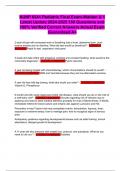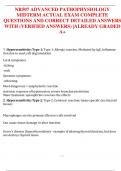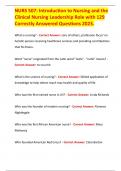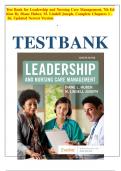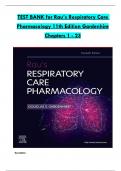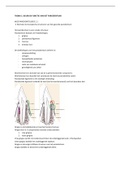Exam (elaborations)
NUNP 6541 Pediatric Final Exam-Walden U 1 Latest Update Questions and 100% Verified Correct Answers Actual Exam Guaranteed A+
- Course
- Institution
NUNP 6541 Pediatric Final Exam-Walden U 1 Latest Update Questions and 100% Verified Correct Answers Actual Exam Guaranteed A+
[Show more]
